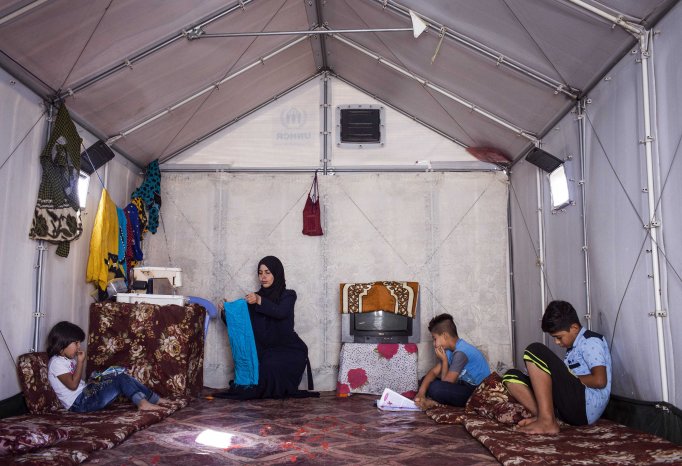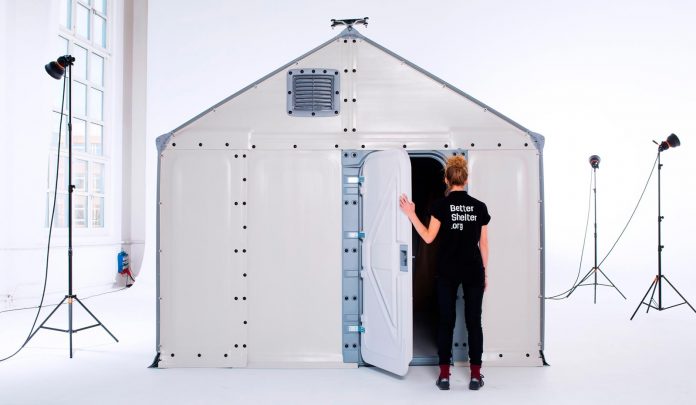by Oliver Wainwright, January 27, 2017
Despite the dramatic increase in the number of people being displaced around the world, with UNHCR, the UN’s refugee agency, estimating there are now 2.6 million refugees who have lived in camps for over five years, and some for more than a generation, the typical flimsy tent hasn’t changed much. Cold in winter and sweltering in summer, tents still rely on canvas, ropes and poles. They generally last about six months, leaking when it rains, and blowing away in strong winds.
With years of expertise in squeezing complex items of furniture into the smallest self-assembly package possible, Ikea has come up with a robust 17.5 sq m shelter that fits inside two boxes and can be assembled by four people in just four hours, following the familiar picture-based instructions – substituting the ubiquitous allen key for a hammer, with no extra tools necessary.
At $1,250, a Better Shelter costs twice as much as a typical emergency tent, but it provides security, insulation and durability, and it lasts for at least three years. Beyond that time, when the plastic panels might degrade, the frame can be reused and clad in whatever local materials are to hand, from mud bricks to corrugated iron.
Since production started in June 2015, over 16,000 have been deployed to crisis locations such as Nepal, where Médecins Sans Frontières used them as clinics following the devastating earthquake. Several thousand have been sent to Iraq, and hundreds to Djibouti to house refugees fleeing Yemen.

This product is multi-use. It can function as a temporary home, school, or medical clinic. What I think is most interesting about BetterShelter, however, is understanding it from a business perspective. It isn’t refugees that purchase the product, it’s non-profit organizations and humanitarian partners that are BetterShelter’s “clients.” We so often think about how a business plan can land a product on shelf, but this business made me consider other methods of providing a product to consumers. It is likely that the product and system I make at Champion would not be sold in stores, rather, would be purchased and distributed by educational organizations.




